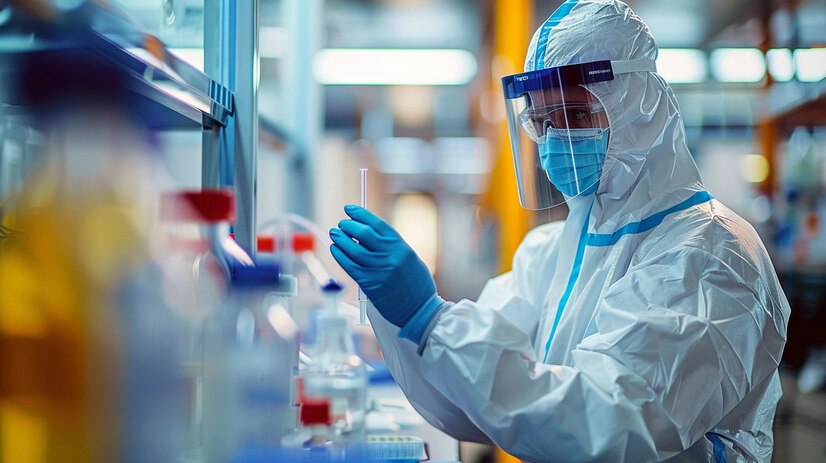Scientific research laboratories are places of innovation and discovery, where researchers work tirelessly to advance our understanding of the world. However, laboratories are often home to a multitude of hazards, including chemicals, biological agents, and specialized equipment. Ensuring laboratory safety is of the utmost importance to protect researchers, maintain compliance with regulations, and uphold the integrity of experimental results.
Qualified Controls offers next-generation continuous monitoring solutions capable of recording an array of physical parameters critical for maintaining safe, efficient, and compliant laboratory environments. In this article, we will explore laboratory safety best practices, discuss how continuous monitoring solutions from Qualified Controls can promote laboratory safety, and provide guidance on implementing these advanced solutions within your research facility.
Safeguarding Laboratory Environments: The Role of Continuous Monitoring Solutions
Ensuring the safety of laboratory environments is a multifaceted process that requires rigorous attention to detail and adherence to established best practices. Continuous monitoring of critical physical parameters plays a vital role in evaluating laboratory conditions, enabling the identification of potential hazards, adherence to regulatory specifications, and the development of proactive safety strategies. By implementing state-of-the-art monitoring solutions like those offered by Qualified Controls, laboratories can create safer work environments and support the success of scientific projects.
Critical Parameters Monitored in Laboratories
Continuous monitoring solutions from Qualified Controls can record a wide array of physical parameters important for fostering safe and controlled laboratory environments. Key parameters frequently monitored in research laboratories include:
1. Temperature: Ensuring consistent temperatures in laboratories, as well as storage facilities for samples, chemicals, or reagents, is essential for preserving the integrity of experiments and ensuring safety in handling temperature-sensitive materials.
2. Humidity: Maintaining optimal humidity levels helps prevent the growth of mold, reduce corrosion of equipment, and mitigate chemical reactions that might produce hazardous byproducts.
3. Air Pressure: In laboratories where volatile chemicals, pathogens, or airborne contaminants are used or generated, maintaining appropriate air pressure is crucial for containing hazardous substances and adhering to industry guidelines.
4. Air Quality: Monitoring air quality in laboratories is vital for detecting potential leaks, spills, or contamination events that might expose personnel to hazardous substances or compromise sample integrity.
5. Equipment Performance: Continuous monitoring of specialized equipment, such as fume hoods, ventilation systems, or refrigeration units, ensures their safe and efficient operation, and facilitates timely maintenance or repairs if needed.
Safety Best Practices for Implementing Continuous Monitoring Solutions
The integration of continuous monitoring solutions into laboratory settings involves several key steps that adhere to safety best practices:
1. Conduct a Hazard Assessment: Begin with a thorough evaluation of the laboratory’s safety and compliance requirements, identifying all potential hazards relevant to the lab processes, equipment, and personnel. This assessment will guide the selection of specific parameters to monitor, as well as the frequency, location, and range of monitoring activities.
2. Consult with Industry Experts: Reach out to specialized providers such as Qualified Controls to explore your options for real-time monitoring solutions, assess features, and select the most appropriate system for your laboratory’s unique requirements.
3. Develop an Implementation Plan: Work with your chosen solution provider and internal stakeholders to create a comprehensive plan for system implementation. This plan should outline equipment requirements, sensor placement, system calibration, and tech support, as well as staff training and performance evaluations.
4. Train Personnel and Foster a Safety Culture: Ensure that laboratory personnel receive training in the proper use, maintenance, and interpretation of the continuous monitoring system. Promote a safety-focused culture by encouraging open communication, reporting of potential hazards or concerns, and adherence to best practices for safe laboratory practices.
5. Review and Update Monitoring Practices: Periodically review the laboratory’s continuous monitoring practices to ensure they remain current, adequate, and effective in meeting evolving safety, compliance, and research goals.
Leveraging Continuous Monitoring Data for Proactive Laboratory Safety Management
Harnessing the power of real-time data generated by continuous monitoring systems like those provided by Qualified Controls enables laboratories to develop proactive safety strategies, anticipate potential risks, and optimize their working environments. Key benefits of leveraging continuous monitoring data include:
1. Identifying Trends and Patterns: Conducting regular analysis of monitoring data helps laboratories identify trends that may highlight potential risks, such as equipment malfunctions or environmental deviations, before they escalate into more significant problems.
2. Developing Risk Mitigation Strategies: By understanding the patterns and indicators of potential hazards, laboratories can develop targeted risk mitigation strategies to address potential issues and enhance overall safety.
3. Ensuring Regulatory Compliance: Real-time environmental monitoring data aids in demonstrating compliance with applicable regulations and guidelines, providing the necessary records and documentation required for audits and inspections.
4. Enhancing Incident Response: Real-time alerts and notifications triggered by continuous monitoring systems allow laboratory personnel to respond quickly to changes in environmental conditions, mitigating the potential impact of incidents such as spills, leaks, or equipment failures.
5. Streamlining Resource Allocation: Three-dimensional analysis of continuous monitoring data enables laboratories to identify areas where resources might be more effectively allocated, promoting better resource utilization, and increased efficiency.
By adopting continuous monitoring solutions, research laboratories can create safer, more efficient, and compliant work environments that support the advancement of scientific knowledge. As the nexus of innovative solutions, Qualified Controls is committed to providing cutting-edge technology and expertise that help laboratories maintain the highest standards of safety and performance.
Empower Your Lab with Qualified Controls’ Continuous Monitoring Solutions
Laboratory safety is a critical concern that demands thorough, proactive strategies and the implementation of advanced monitoring solutions. By adopting continuous monitoring systems from Qualified Controls, research facilities can enhance safety, maintain regulatory compliance, and optimize their working environments, all while supporting the pursuit of scientific discovery.
Partner with Qualified Controls today to develop a customized continuous monitoring solution to meet your laboratory’s unique safety and compliance requirements. Our team of experts will collaborate with you to design a state-of-the-art system tailored to your facility’s needs, ensuring the highest levels of safety and performance.
Don’t wait – contact Qualified Controls today, and empower your research laboratory with cutting-edge continuous monitoring technology that fosters safety, efficiency, and scientific innovation.


